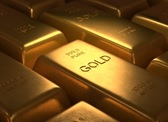April BoJ Meeting And Gold

 Yesterday, the Bank of Japan released its most recent monetary policy statement. How can it affect the gold market?
Yesterday, the Bank of Japan released its most recent monetary policy statement. How can it affect the gold market?
The recent FOMC statement did not surprise the markets. On the contrary, the Bank of Japan dashed the investors’ hopes and decided to maintain the key policy rate steady while keeping the monetary base expansion at 80 trillion yen annually. The BOJ also pushed back its timeframe for achieving the target of 2-percent inflation to 2017. On the other hand, the BoJ said that it would provide loans at zero interest rate to areas impacted by the recent Kumamoto earthquakes. However, the statement was a big disappointment for investors who expected further stimulus after the CPI fell to its lowest level in two years (March consumer price inflation declined 0.3 percent on an annual basis). Indeed, the BoJ’s decision may be surprising, given that it cut its 2016-2017 forecasts for core CPI growth from 0.8 to 0.5 percent and for GDP growth from 1.5 percent to 1.2. In consequence, Japanese stocks plunged (the Nikkei 225 index dropped over 3 percent), while the yen surged. The price of gold also increased, drawing from the U.S. dollar’s weakness.
The BoJ’s inaction may signal that the Japanese central bank is running out of tools to stimulate the economy. It should not surprise us: the BoJ owns over 30 percent of the country’s sovereign debt and over half of the Japanese ETFs, according to Bloomberg. If the BoJ further increases its purchases, the Japanese financial markets may become extinct at some point. The curtailed effectiveness of the BoJ should be positive for the gold market as investors may lose the last remnants of confidence in central banks and increase their safe-haven demand for gold.
Another possible explanation is that some form of an agreement was reached at the G-20 meeting, that central banks would work together to stabilize the foreign exchange market. Both the ECB and the BoJ kept their monetary policies steady in April – some analysts believe that their decisions set the stage for the Fed hike in June. If this theory is true, gold may be under pressure from the Fed’s tightening cycle.
The take-home message is that the Bank of Japan did not change its monetary policy, damping the investors’ expectations of further stimulus. The BoJ’s inaction is positive for the yen and negative for the U.S. dollar. An appreciating yen means a weaker greenback and stronger gold. However, a depreciating dollar will prop up the inflation rate (by making imports more expensive), which could increase the odds of an interest rate hike in June. A higher probability of such a move would put the shiny metal under downward pressure.
If you enjoyed the above analysis, we invite you to check out our other services. We focus on fundamental analysis in our monthly Market Overview reports and we provide daily Gold & Silver Trading Alerts with clear buy and sell signals. If you’re not ready to subscribe yet and are not on our mailing list yet, we urge you to join our gold newsletter today. It’s free and if you don’t like it, you can easily unsubscribe.
Disclaimer: Please note that the aim of the above analysis is to discuss the likely long-term impact of the featured phenomenon on the price of gold and this analysis does not indicate (nor does it aim to do so) whether gold is likely to move higher or lower in the short- or medium-term. In order to determine the latter, many additional factors need to be considered (i.e. sentiment, chart patterns, cycles, indicators, ratios, self-similar patterns and more) and we are taking them into account (and discussing the short- and medium-term outlook) in our trading alerts.
Arkadiusz Sieron
Sunshine Profits‘ Gold News Monitor and Market Overview Editor

















